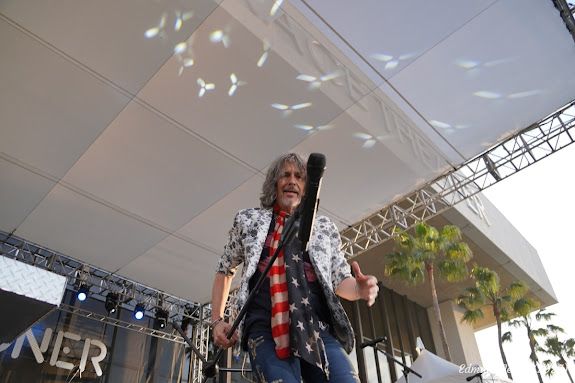ACT Expo 2025: Ai-Powered Self-Driving Semi-Trucks Steal The Show Amid
Sustainable Mobility Debates
The Advanced Clean Transportation (ACT) Expo, held April 28–May 1, 2025, at the
Anaheim Convention Center, brought together over 12,000 attendees and 500+
exhibitors to explore the future of commercial transportation. Amid a packed
agenda of keynote presentations, executive panels, and technical workshops, the
spotlight fell on a transformative keynote addressing Ai-powered self-driving
semi-trucks, with Penske Transportation Solutions’ Catalyst Ai platform emerging
as a pivotal innovation. The event also revealed a palpable tension: a hesitancy
among industry leaders navigating a government-directed market for sustainable
mobility, contrasted with a strong push for free-market innovation.
Ai Self-Driving Semi-Trucks: A Leap Forward
The keynote on Ai self-driving semi-trucks captivated attendees, showcasing
advancements in faster learning, expanded testing, and superior adaptability.
Industry pioneers like Plus, a self-driving truck company, demonstrated how Ai
systems enhance safety, reduce carbon emissions, and improve driver comfort for
long-haul trucking. The keynote emphasized that Ai’s real-time data analysis and
predictive capabilities are revolutionizing fleet management, with systems
capable of adapting to complex road conditions and optimizing routes
dynamically.

Penske Transportation Solutions’ Sherry Sanger, executive vice president of
strategy and marketing (above), highlighted their Catalyst AI platform during a
dedicated session. Catalyst AI leverages real-time comparative data from
Penske’s database of hundreds of thousands of vehicles to optimize fleet
performance, slashing decision-making timelines from weeks to minutes. This
technology addresses critical industry challenges, including resource scarcity,
digital transformation, and productivity imperatives, by providing actionable
insights that enhance operational efficiency and sustainability.
The Case for Ai in the Commercial Vehicle Industry
The arguments for Ai adoption in the commercial vehicle sector were compelling.
Resource scarcity—particularly in energy, infrastructure, and skilled
labor—demands smarter solutions. Ai mitigates these constraints by optimizing
fuel usage, predicting maintenance needs, and reducing downtime, potentially
saving the industry up to $627 billion annually by 2025 through predictive
maintenance alone. Digital transformation is another driver, with Ai enabling
seamless integration of vehicle-to-vehicle (V2V) and vehicle-to-infrastructure
(V2I) communication to improve traffic flow and safety.
Productivity imperatives further underscore Ai’s value. McKinsey & Company
projects that Ai could boost automotive productivity by 1.3% annually through
process optimization. Catalyst AI exemplifies this, empowering fleet managers to
navigate supply chain disruptions and regulatory complexities with data-driven
precision. As Sanger noted, “Ai is not just about automation—it’s about
advancing how we work, serve, and inform.” This multidimensional approach
positions Ai as a cornerstone of the industry’s future, from enhancing driver
experiences to informing policy and infrastructure development.
Sustainable Mobility: A Contentious Landscape
Despite the enthusiasm for Ai, the Expo’s broader discussions on sustainable
mobility revealed a cautious tone. Presentations covered a range of power
options—battery-electric, hydrogen fuel cell, renewable diesel, and
propane—reflecting the industry’s commitment to net-zero goals. However, a
recurring theme was the industry’s unease with government-directed market
interventions. Incentives and mandates, such as the EPA’s Phase 3 emissions
standards for 2027–2032, have accelerated zero-emission vehicle adoption but
sparked debate over their impact on free-market innovation.
Attendees expressed frustration with the “removal of enhancements”—a euphemism
for subsidies and grants—that have historically propped up certain technologies.
Erik Neandross, president of GNA (a TRC company), noted during a keynote that
while clean technology announcements are “seemingly nonstop,” challenges like
charging infrastructure gaps and high battery costs persist. This sentiment was
echoed in a policy workshop moderated by Penske’s David Battisti, which explored
how regulations shape sustainability efforts, often at the expense of
market-driven solutions.
The State of Sustainable Fleets 2024 Market Brief, co-sponsored by Penske, Volvo
Trucks North America, and Chevron, underscored these dynamics. It reported
growth in electric, hydrogen, and renewable fuel adoption but highlighted a
regulatory landscape complicating fleet planning. Drew Cullen, Penske’s senior
vice president of fuels and facility services, emphasized that fleets are
proactively adopting sustainable solutions, not merely reacting to mandates.
Yet, the hesitancy in delivery suggested a fear: that overreliance on government
“bribes” could stifle innovation and skew competition.
Balancing All Power Options
The Expo championed an “all power options on the forefront” approach, advocating
for a technology-neutral path to sustainability. Battery-electric vehicles like
the Freightliner eCascadia and Volvo VNR Electric were showcased, alongside
hydrogen fuel cell trucks from Kenworth, Peterbilt, and Nikola. Renewable
diesel, with production capacity projected to reach 5 billion gallons annually
by 2025, also gained traction, particularly among government fleets.
However, the push for free-market introduction and development was
unmistakable. Industry leaders argued that government mandates, while
accelerating adoption, often favor specific technologies, sidelining others with
potential. Ivet Taneva, Penske’s vice president of environmental affairs,
moderated a session on carrier strategies to reduce emissions, stressing the
need for flexible policies that allow fleets to choose the best solutions for
their operations.
Looking Ahead: Ai as the Catalyst
As ACT Expo 2025 concluded, the convergence of Ai and sustainable mobility
emerged as a defining theme. The event’s record-breaking attendance and robust
exhibitor presence underscored the industry’s momentum. Posts on X captured the
excitement, with one highlighting a “leap forward in autonomous trucking
technology” showcased at the Expo.
Penske’s Catalyst AI, alongside innovations from companies like Plus and Tesla
(whose Semi updates were discussed), signaled a future where AI not only drives
trucks but reshapes the entire transportation ecosystem. Yet, the industry’s
path forward hinges on balancing technological promise with market realities. By
embracing all power options and prioritizing free-market innovation, the
commercial vehicle sector can navigate resource constraints, regulatory
pressures, and productivity demands—ensuring a sustainable, efficient, and
autonomous future.
The hesitancy observed at ACT Expo 2025 was not rooted in uncertainty but in a
collective resolve to chart a course where innovation, not intervention, leads
the way. As Neandross aptly summed up, “The market has grown 1,000% over 30
years—growth is the word of the year.” With Ai as a catalyst, that growth shows
no signs of slowing.
… notes from
The EDJE
TAGS: #Ai, #actexpo, AI, Artificial Intelligence, Commercial, Savana,
Self-Driving, The EDJE















































